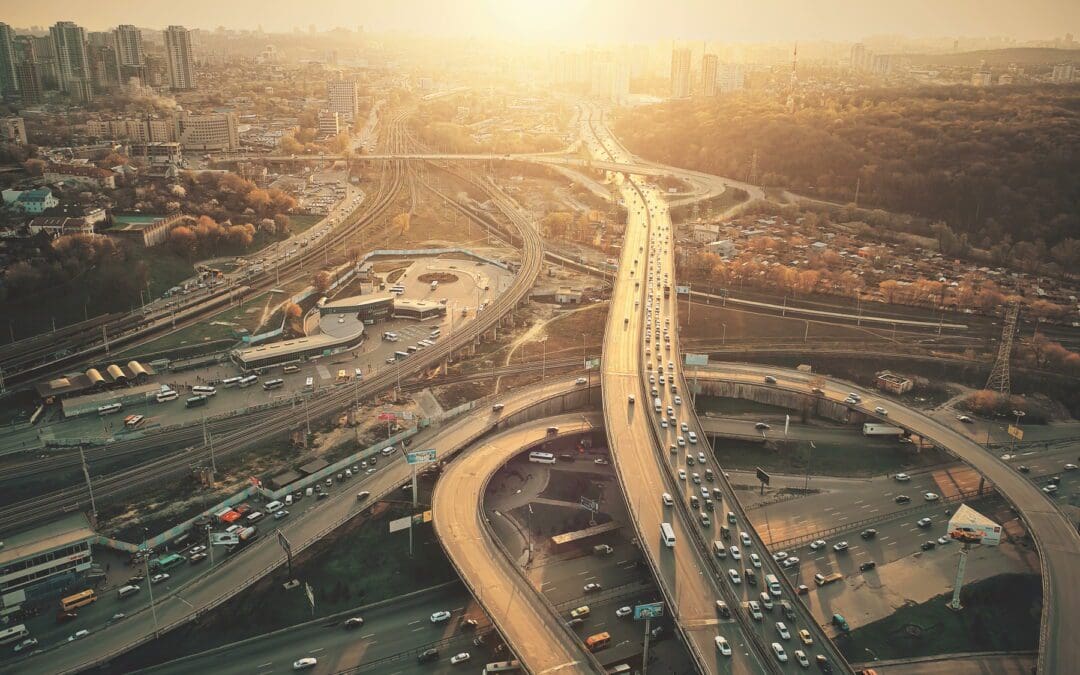Even within the same country, transportation cultures can be drastically different.
For instance, in New York, the public transportation system is a lifeline for many residents, with the subway being the primary mode of transportation. The city’s layout encourages walking and cycling, and the fast-paced lifestyle is mirrored in the subway rush.
However, Los Angeles is known for its car culture. The city is spread out, making public transportation less effective, meaning most residents rely on their cars. LA is notorious for its traffic and highly congested freeways. Navigating through this requires patience and a certain assertiveness.
These differences extend beyond the types of transportation. They also encompass attitudes and road behaviors. In some cities, drivers may be more aggressive, while others may prioritize courtesy and safety.
Therefore, when moving to or visiting a new city or country, you must adapt to the local transportation culture.
1. Do Your Research
A number one rule for most unknown adventures or concepts: do your research — especially if you’re visiting or living in a place long-term. Here are a few tips to get you started:
- Websites, blogs, and travel guides often provide valuable information about local transportation systems. Look for articles or posts about the area you’re moving to.
- Government and public transport sites have detailed information about public transport routes, schedules, and fares. They may also provide guidelines about road safety, local driving laws, and etiquette.
- Platforms like Instagram or TikTok can give you a glimpse into the transportation culture of an area. Search for location-specific hashtags or accounts to find relevant content.
Aside from these, talk to friends or family who’ve been to your destination. They might have helpful thoughts and feedback on what to expect.
2. Ask Locals
Locals can provide honest, practical insight that you might not get from official sources. If you’re already in the area, talk with someone at a restaurant, bar, or other communal area. People often love to share advice and tips about their city.
If you know someone in the area, ask them about their experiences, such as:
- What are the major modes of transportation in this area?
- Are there any local traffic customs or behaviors I should know?
- How should I navigate the transportation system or deal with traffic?
This way, you can get direct answers on the ground-level reality of using the transportation system in your new area.
3. Join a Local Forum
Online forums are sometimes the best tour guides, with a wealth of information about a locale. These platforms are where locals and expats share experiences, ask questions, and offer advice.
Here are some of the best places to start:
- Websites like City-Data Forum or Expat Forum have sections dedicated to specific cities or countries.
- Subreddits dedicated to specific locations (for example, r/nyc or r/LosAngeles) can be a great source of information. Users often post about their experiences and answer questions about local life.
- Many cities have Facebook groups where locals and newcomers share information and ask questions. Search for “[City Name] expats” or “[City Name] locals” to find relevant groups.
This way, you can post any specific questions, as well as get real-time feedback and multiple perspectives.
4. Observe Carefully
While observation may seem like an overwhelming task, it’s relatively easy. However, it helps to know what you’re looking for:
- Drivers: Are they aggressive or passive? Do they generally adhere to speed limits, or is speeding common? How do they handle intersections, roundabouts, or merging onto highways?
- Public transport use: When are peak times? How much does it cost, and are there various routes to take?
- Pedestrian behavior: Do they jaywalk or always use crosswalks? Are there many people biking or using scooters?
- Parking: Is it easy to find parking spaces? Do locals park their cars on the street, or are there designated parking lots?
To observe safely, maintain a safe distance from others to prevent accidents. Stay focused on your primary task, and instead of jotting down observations as you go, make mental notes and record them later.
5. Remain Alert
New environments come with unfamiliar rules and behaviors; failing to stay alert could lead to accidents or injuries, including:
- Rear-end car accidents: Like sudden braking or changing lanes without signaling.
- T-bone car accidents: Often happen at intersections, and unfamiliarity with local right-of-way rules increases the risk.
- Pedestrian accidents: You could easily collide with someone on foot if you’re not used to local pedestrian behavior or bike paths.
- Bike accidents: These can occur if you’re not used to sharing the road with two-wheeled vehicles.
Familiarize yourself with local traffic rules and common behaviors to anticipate potential hazards and observe your surroundings by regularly using mirrors and checking blind spots.
6. Travel During Low-Traffic Times
Low-traffic times are the best of times — especially when you’re getting accustomed. Fewer vehicles on the road mean a lower chance of accidents, more space for navigation, and a stress-free environment to explore new routes or transportation methods.
Moreover, diving into high-traffic situations too early can lead to accidents, regardless of your mode of transport. If you rely on rideshare services like Uber, remember that these drivers are not immune to traffic accidents.
Likewise, some modes of transportation can be especially hazardous in high-traffic situations. Motorcycles are particularly vulnerable in heavy traffic. They can easily get caught in blind spots, and their lack of protective barriers means accidents can be severe.
7. Leave Early
Leaving early makes a big difference in your travels. With enough time to reroute or re-plan, you can:
- Beat the rush hour and travel in less congested conditions.
- If you’re still learning, leaving early gives you extra time to find your route without the pressure of being late.
- New environments bring unforeseen challenges. Extra time can help you handle these issues calmly.
- In some places, queues for public transport can be long, especially during peak hours. Leaving early can ensure you have a spot and won’t have to wait for the next bus or train.
Plan your day accordingly and, if possible, aim to leave at least 30 minutes earlier than you normally would.
8. Consider General Cultural Differences
Understanding transportation norms is important as they are shaped by cultural practices and expectations. Cultural nuances impact behavior on public transport. Economic factors also influence transportation landscapes.
For example, in fast-paced cultures like Tokyo, driving habits tend to be hurried and fast. On the other hand, community-focused cultures like Sweden prioritize a peaceful and considerate commuting environment, discouraging disruptive behaviors. In industrial regions, increased commercial traffic — including semi-trucks and other commercial vehicles — affects traffic patterns and raises the risk of accidents specific to these vehicles.
Overall, adjusting yourself to a new transportation culture involves understanding the broader cultural and economic context. By doing so, you can navigate safely, confidently, and respectfully.


